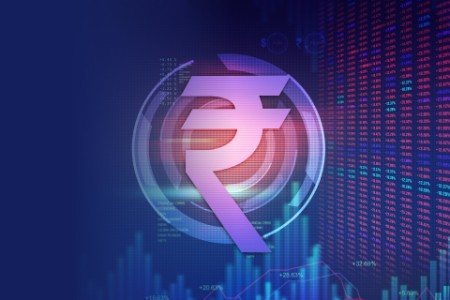As far as recovery from COVID-19 is concerned, there was a notably high growth rate in this sector in FY22 due to a large favorable base effect. When we look at the profile of recovery by calculating growth in FY22 over FY20, it is clear that in case of most states, recovery has not been complete since the FY22 magnitude remained below that of FY20. The only states that showed marginally positive growth rates among the ML group of states are Gujarat, Tamil Nadu and Telangana. The second wave of COVID-19 largely affected 1QFY22. This particularly affected the trade, transport, hotels et al. sector which is indicated by a continued negative growth in the output of this sector in FY22 as compared to that in FY20.
How far did the states stimulate their economies?
With a view to combating the growth erosion resulting from the economic shocks of COVID-19, one major policy instrument available to the central and state governments was fiscal stimulus. At the central level, the fiscal deficit relative to GDP was expanded well above the Fiscal Responsibility and Budget Management (FRBM) threshold of 3% of GDP, taking it to 9.2% in FY21. States also responded by expanding their fiscal deficit to Gross State Domestic Product (GSDP) ratios although in their case, the extent of departure from the FRBM benchmark of 3% was limited. The fiscal deficit to GSDP ratio was 4.1% for the ML states and 3.8% for the SH states.
For the aggregate of states, fiscal deficit relative to GDP was at 4.1% in FY21. With respect to the fiscal deficit profile of individual states, the largest levels were seen in the case of Rajasthan and Andhra Pradesh at 5.8% each, followed by Kerala, Tamil Nadu, and Bihar at 5.3% each. For SH states, the largest fiscal deficit to GSDP ratios were for Mizoram at 7.8%, followed by Meghalaya at 7.7% and Sikkim at 6.9%. States in general have tried to reduce their fiscal deficit relative to GSDP in FY22. However, as per the revised estimates (RE), states such as Bihar, Punjab, Assam among ML states and Manipur, Nagaland, Himachal Pradesh, and Tripura among SH states show high fiscal deficits relative to their GSDPs.
As a result of the inordinate increase in the fiscal deficit to GSDP ratios, the debt-GSDP ratios also increased well above the prescribed benchmark of 20% as per the 2018 amendment of center’s FRBM2 . States that were significantly above this threshold and even above the threshold of 40% in FY21 include Punjab, West Bengal, Rajasthan, Kerala, and Bihar among ML states. Those ML states that had a debt-GSDP ratio higher than 30% but below 40% were Andhra Pradesh, Jharkhand, Uttar Pradesh, Haryana, Tamil Nadu, and Madhya Pradesh.
According to a recent exercise3 undertaken for forecasting the profile of state level fiscal deficit and debt relative to GSDP for individual states in the ML group, it is indicated that some of the states which may exceed the debt-GSDP threshold of 30% by FY26 include Haryana, Kerala, Punjab, Rajasthan, West Bengal and Andhra Pradesh and Telangana considered together.4
Paving the way for prosperity
Policymakers must now prioritize reducing the debt and fiscal deficit relative to GDP of both central and state governments to align with sustainability norms, establishing a firm base for consistent and robust medium-term growth. This would be crucial for achieving India’s ambitious goal of becoming a US$5 trillion economy in the next few years. In this endeavor, states would have a significant role to play.
The combined size of the five largest states namely, Maharashtra, Tamil Nadu, Gujarat, Karnataka, and Uttar Pradesh are projected to reach US$2.6 trillion by FY28 (for details, see the In-focus section of the March 2023 issue of the Economy Watch)5. However, for reaching the US$5trillion target, other larger states such as West Bengal, Rajasthan, Andhra Pradesh, Telangana, Madhya Pradesh, and Kerala would also make a significant contribution.


